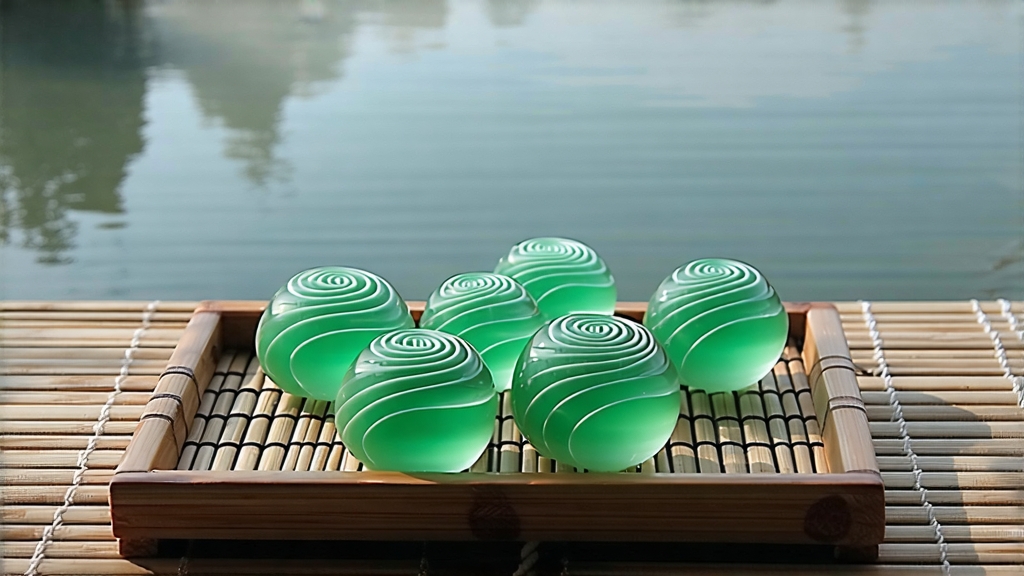
Tucked between the mist-laden hills of Dongting Mountain and the gentle ripples of Taihu Lake in Jiangsu Province, Biluochun—literally “Green Snail Spring”—has been celebrated for over a thousand years as one of China’s ten most famous teas. International drinkers often meet it in glossy magazines or on boutique menus, yet its delicate appearance and haunting fragrance remain misunderstood. This essay invites you to step beyond the name, tracing the leaf from Tang-dynasty legend to your own porcelain gaiwan, and to discover why a tea so tiny can speak so loudly of place, season, and human patience.
Origin story and imperial fame
According to mountain chronicles, tea pickers in the Dongting region noticed an unusually intense aroma wafting from wild trees growing among peach, plum, and apricot groves. The mingled scents of fruit blossoms and tea were carried by lake breezes into the curled shoots, creating a natural perfumery that astonished everyone who tasted the infusion. During the Kangxi era (1661-1722), the emperor visited Lake Tai and was served the local tea. Struck by its jade color, spiral shape, and overwhelming fragrance, he christened it “Biluochun,” replacing its earlier folk name “Xia Sha Ren Xiang” (“Scary-fragrant”). From that moment the tea entered tribute status; each spring, the finest buds were rushed to Beijing in bamboo-lined chests cushioned with silkworm cocoons to preserve their aroma.
Micro-terroir: why Taihu matters
Dongting Mountain is actually two islands—East and West—anchored inside a large freshwater lake. The water body moderates temperature, storing daytime heat and releasing it at night, so frost rarely scars the early spring buds. Constant humidity nurtures a slow, tender growth, while drifting lake mist filters sunlight into soft, diffused rays. The result is a higher ratio of amino acids to polyphenols, giving Biluochun its celebrated sweetness and low astringency. Around the tea gardens, fruit trees continue to bloom almost simultaneously with the tea flush; their pollen and volatile esters settle on the tea surfaces, contributing to a unique floral bouquet that cannot be replicated elsewhere.
Cultivar spectrum
The original population is seed-propagated, so every hillside parcel harbors subtle genetic drift. Local clonal selections such “Dongting #1” and “Dongting #2” now dominate commercial plots, prized for early budding and high fragrance. Aromatic chemotypes show increased linalool and geraniol, the same molecules found in rose and neroli, explaining why some drinkers detect notes of magnolia or even passion fruit. Because the cultivars remain closely related to wild tea trees, the leaves are unusually small; ten thousand buds yield barely 500 g of finished tea, making Biluochun one of the most labor-intensive greens on earth.
Harvest calendar: the 72-hour window
Picking begins when the meteorological station records five consecutive days with an average temperature of 10 °C, usually between mid-March and early April. Only the “single bud with one unfolding leaf” standard is accepted, plucked at dawn while dew still sheathes the shoots. Experienced pickers can gather just 300 g of fresh leaf per hour; four hours of work translate into 50 g of dry tea. If rain threatens, the entire mountain mobilizes, because water droplets on buds will scorch during frying and ruin the prized downy appearance.
Kill-green by hand: the art of three pan-fires
Within two hours of plucking, the leaves are withered for 30 minutes on bamboo sieves placed above a gentle charcoal brazier. This removes surface moisture and softens cell walls. The critical step is “three pan-fires” (san bao zhen). A 90 °C copper pan is swabbed with a slab of pork fat that has been steeped in tea juice—an ancestral trick to create a micro-layer of seasoning that prevents sticking. The picker tosses 100 g of leaf, using only wrist flicks to roll the shoots against the hot metal. After three minutes the temperature drops to 70 °C; the leaf is removed, kneaded for ten seconds, then returned for another two minutes. A final burst at 60 °C sets the spiral shape. Throughout, the operator listens for the “popcorn crackle” that signals proper dehydration. When done correctly, each bud curls into a tight spiral covered in sil